How I Strategically Setup My Substack For My Creator Business
(And How I Made 97 Email Subs & 233 Followers In 14 Days)
In this Ark Letter, you’ll learn:
↱ The difference between your Substack profile and publication - and why setting up both strategically matters for business growth
↱ How to write a bio that immediately communicates authority without sounding like every other beginner creator
↱ All the crucial publication settings that most creators skip - but are essential to make sure your Substack is 100% ready to grow
Watch the video version of this article here:
Two weeks ago, I made the decision to start publishing on Substack.
Since then, I have already generated 97 new email subscribers:
And 233 new followers on my profile:
I've told all of my creator friends about how Substack was such a good opportunity at the moment, but they all asked me the same question:
“How did you actually set this up? All these settings and options are confusing the hell out of me.”
So today, I’m walking you through my complete strategic Substack setup - not just the technical steps, but the business thinking behind every single decision I made.
Section 1: Platform Foundation
But first, what exactly makes Substack different from every other platform?
Most creators think of Substack as another newsletter tool, but that completely misses the point.
Substack operates as three platforms in one:
A social media platform with an algorithm that helps you get discovered,
An email provider that collects subscriber addresses,
And a blog hosting platform for your long-form content.
Here’s why this matters for your creator business:
On Twitter or Instagram, you build followers but you don’t own the relationship.
The platform controls who sees your content.
One algorithm update and years of audience building becomes worthless.
But Substack gives you something different:
When someone subscribes to your publication, you get their actual email address.
You can export that list.
You own the relationship.
The conversion funnel is seamless:
People discover you through your notes on the platform, they follow your personal profile, then they see your longer-form publication and can subscribe with their email directly inside the app.
Everything happens in the same ecosystem, which means higher conversion rates and better user experience.
And right now, we’re in what I call the early majority phase.
Image Credits: Matt Giaro
The platform has massive reach - over 50 million unique monthly visitors - but it’s not oversaturated with creators yet.
And with Dan Koe and Justin Welsh migrating their entire audiences to Substack, that’s a signal that there is an opportunity window smart creators can leverage.
But understanding the platform is just the first step.
The real game is how you strategically position yourself within it.
Strategic Profile Setup
How do you create a profile that immediately communicates authority without looking like every other creator?
Your Substack profile has two main components:
1) Your personal profile, which acts like a social media profile similar to Twitter,
2) And your publication website, which hosts all your newsletters.
These are separate entities, but they work together strategically.
Let’s start with your personal profile setup.
For your profile picture, I recommend showing your face if you want to create personal connection and relatability with your audience.
You can go the faceless route if you want, but keep in mind that it makes it harder to connect with people.
It’s possible to succeed as a faceless brand, but you’re choosing a more difficult path.
Then you set your name and handle - straightforward enough.
But here’s where most creators make their first mistake:
The bio.
Let me show you mine:
Why did I structure it this way?
Three strategic decisions.
First, I lead with concrete results to establish authority and credibility.
Numbers cut through noise faster than any explanation.
Second, I position my expertise across multiple areas while staying specific enough to be unique.
You won’t find someone else writing about this exact combination of topics.
Third, I avoid the trap that most beginners fall into: vague, abstract, or philosophical bios.
Dan Koe can afford to name his newsletter “Future/Proof” and use “stay relevant” as his bio because he’s Dan Koe.
Everyone knows who he is.
But when you’re building from zero, you need to make people understand why they should read you in the first place and how you’re different from the 10,000 other creators starting out.
When you’re a polymath with a multi-disciplinary approach like I am, the classic “I help X do Y with Z” formula feels limiting.
Instead, I use “I write about…” followed by three broad but specific topics that describe my core value areas:
Second Brain methodology,
AI integration philosophy,
And the concept of achieving purpose and profit together.
This approach explains what you do without boxing yourself in, while still making your reader understand what’s in it for them and how you’re different.
Finally, add your social links and you’re done with the basic profile.
But your profile is just the front door.
The real business happens in your publication setup.
Strategic Publication Setup
How do you set up your publication not just as a newsletter, but as a complete business system?
This is where most creators either get overwhelmed by the options or make decisions without strategic thinking.
Let me walk you through each critical decision and why I made these choices.
I won't describe each section but go through the most important one to update so your publication is ready to welcome readers.
(You can access the settings of your publication by clicking to "dashboard" then "settings" after creating it)
1) Basics
First, the basics section.
You’ll select your language and choose your publication’s primary and secondary categories.
These categories are more important than most people realize because they determine where you appear in Substack’s interface and who your competitors are.
When you see someone getting a notification like “#87 rising in philosophy”, that means they’re the 87th fastest-growing newsletter in the philosophy category.
Choose carefully because this affects who Substack recommends your publication to.
I selected business as my main category and philosophy as my second because that felt most aligned with my brand and audience.
2) Payment
Next, the payments section.
Here you can set up everything related to monetizing with paid posts.
I’m not going deep into this because I monetize my brand through my own digital products instead of a paid newsletter.
Paid newsletters work great for people with large followings, but as a creator building a purposeful business with an audience of 1,000 true fans, paid newsletters aren’t the optimal monetization strategy imo.
3) Website
The website section lets you customize your publication’s appearance - theme, layout, and fonts.
Make sure you have a clear call-to-action to subscribe somewhere visible.
Personal preference matters here, but user experience should be your priority.
Now for the critical decisions.
I chose Noah’s Ark for my Publication name because I built all my branding around this biblical mythology.
The Ark relates directly to my mission of helping creators build their own “Digital Ark” to survive the AI flood.
Plus, my name is Noah, so it creates personal connection while reinforcing my brand narrative.
Publication description might be the most critical element of your entire setup.
Mine reads:
“Weekly essays on building an AI Second Brain with Kortex, blending human and AI creativity, and achieving purpose and profit with your creator business.”
Notice how similar this is to my bio - that’s intentional consistency.
This description accomplishes several goals simultaneously.
It explains my different topics while being specific and unique enough to differentiate me.
Each element represents a core value of my brand:
The Second Brain philosophy, the AI integration approach, and the purpose-profit alignment concept.
The pages and navigation section determines which tabs people see at the top of your publication.
I kept the default options - home, notes archive, and about - and added one strategic page:
A direct link to my free lead magnet that includes my entire AI Second Brain setup.
I also updated the about section, which I highly recommend.
I structured mine in two parts:
1) My mission and value proposition
2) Then my personal story and journey
Remember to always end with a call-to-action to subscribe in your about page.
4) Growth Features
Growth features let you set up rewards for subscribers who share your Substack.
I haven’t implemented this yet, but it can boost growth through word-of-mouth incentives.
5) Emails
The email section is the second most important area after your description.
Here you define your sender name, email header and footer, opt-out page, and whether people need email confirmation before subscribing.
I personally just added a call-to-action to my lead magnet in the email footer.
I haven’t customized the opt-out page yet, but you could include a short survey to understand why people unsubscribe or try to keep them in your ecosystem by offering alternative engagement options.
Welcome emails are crucial for first impressions.
The welcome email for free subscribers goes to everyone joining your Substack.
In mine, I restate my mission, explain the type of content they can expect each week, and include a transparency section about product launches and promotions so they know they might receive emails outside of Substack.
I always end with a call-to-action to my lead magnet because that’s my number one priority for moving people through my funnel.
The imported subscriber email is critical if you already have an existing email list.
Transparency and authenticity are key for keeping your email list fresh and engaged while building trust with your audience.
I tell them they’ve been added because they joined one of my free or paid products before, explain what they can expect from the Substack, and clearly explain how they can opt out if needed.
6) Privacy
Under the privacy section, I created custom terms of service and a privacy policy.
This is particularly important if you have an existing business and imported your list to Substack.
The goal is compliance with GDPR and CAN-SPAM rules.
Use ChatGPT to help you write these and ask it to ask you questions so you don’t miss anything.
As small creators, we don’t risk much if we aren’t 100% compliant, but it shows professionalism and protects your audience.
The details section requires your copyright information, mailing address for legal compliance, email address for RSS feeds, and a publication introduction.
I updated everything even though I’m not sure where some of it appears on the platform - better complete than empty.
Finally, the import/export section lets you import existing lists and export your data from Substack.
This is a powerful feature for creator sovereignty - you can always take your audience with you.
But here’s what most creators miss:
Your Substack is only as strong as the thinking system behind it.
Section 4: Second Brain Integration
How do you create content that stands out in an AI-flooded world ?
Everything I’ve shown you about setting up Substack strategically is valuable, but it’s not enough.
To differentiate yourself from the mass of other creators starting out and rise above the AI flood, your only moat is building your own Second Brain.
A Second Brain is where you gather all your notes, ideas, and writing in the same place.
But more than organization, it’s where you’ll cultivate your unique perspective, develop your philosophy, and create the thinking frameworks that allow you to stand out, establish unique positioning, and grow an audience of fans who want to buy your products.
Without this foundation, you’re just another creator publishing content that sounds like everything else.
With it, you become someone who consistently generates insights that people can’t get anywhere else.
Most creators struggle because they don’t know what to write about.
When they do write, it sounds generic because they’re not building on a foundation of unique thinking.
They’re consuming information and regurgitating it instead of developing their own perspective through systematic thinking.
Your Second Brain becomes your competitive advantage.
Every piece of content you create builds on your accumulated insights.
Every newsletter draws from your personal knowledge foundation.
Every note you publish represents genuine thinking rather than surface-level observations.
Kortex makes this possible by combining note-taking, knowledge management, and AI integration in one system designed specifically for creators.
You can capture insights, connect ideas across different domains, and use AI to help develop your thinking without losing your authentic voice.
If you want to discover how my Second Brain system works, click here to read my article on my entire system breakdown:
When AI-generated content floods every platform, authentic perspective becomes incredibly valuable.
The creators who succeed aren’t the ones who can prompt AI the best - they’re the ones who can think clearly, connect ideas uniquely, and communicate insights that only they could have developed.
And if you want to start building your own AI Second Brain system, I’ve created Noah’s Ark Bank:
My free collection of 20+ templates, SOPs, and AI prompts to build your AI Second Brain right now.
Conclusion
Most creators think platform success is about mastering the platform.
But here’s what starting on Substack reminded me about building a sustainable creator business.
Success operates on three distinct layers, and most training only covers the first one.
Layer One is Technical Setup - the basic profile completion and feature activation that gets you in the game.
Layer Two is Strategic Positioning - the audience-focused decisions and business-aligned choices that get you noticed.
Layer Three is Unique Perspective Development - the authentic voice cultivation and systematic thinking that gets you remembered and followed.
This video covered Layer One & Two thoroughly, but Layer Three is what creates lasting success.
Whether it’s Substack today, or whatever platform emerges next, the creators who build sustainable businesses aren’t the ones chasing every new feature.
They’re the ones who use platforms strategically to amplify perspectives that only they can provide.
Your Substack setup matters, but your thinking system matters more.
Platform independence comes from building on your unique perspective, not platform features.
When you develop your ideas systematically, you create content that works across any platform because it’s rooted in authentic insight rather than trending topics.
You’re not just building on Substack - you’re building a creator business that can survive any algorithmic change or platform shift.
If you found this article valuable, don't forget to drop a like, it helps me a lot.
And let me know in the comments if you have any questions about your Substack Setup, I would be happy to help
Subscribe for weekly breakdowns on building an AI-powered creator business that aligns purpose with profit.
And if you want to understand why Substack is such a powerful opportunity right now, watch my previous article on why smart creators are ditching social media for Substack:
Thanks for reading,
And welcome back to Noah’s Ark.
Noah


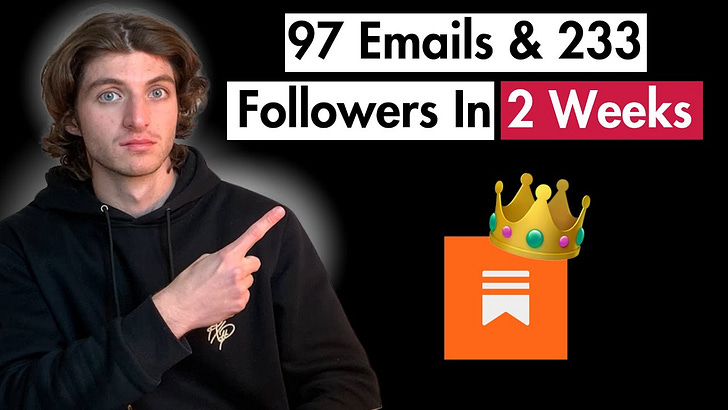



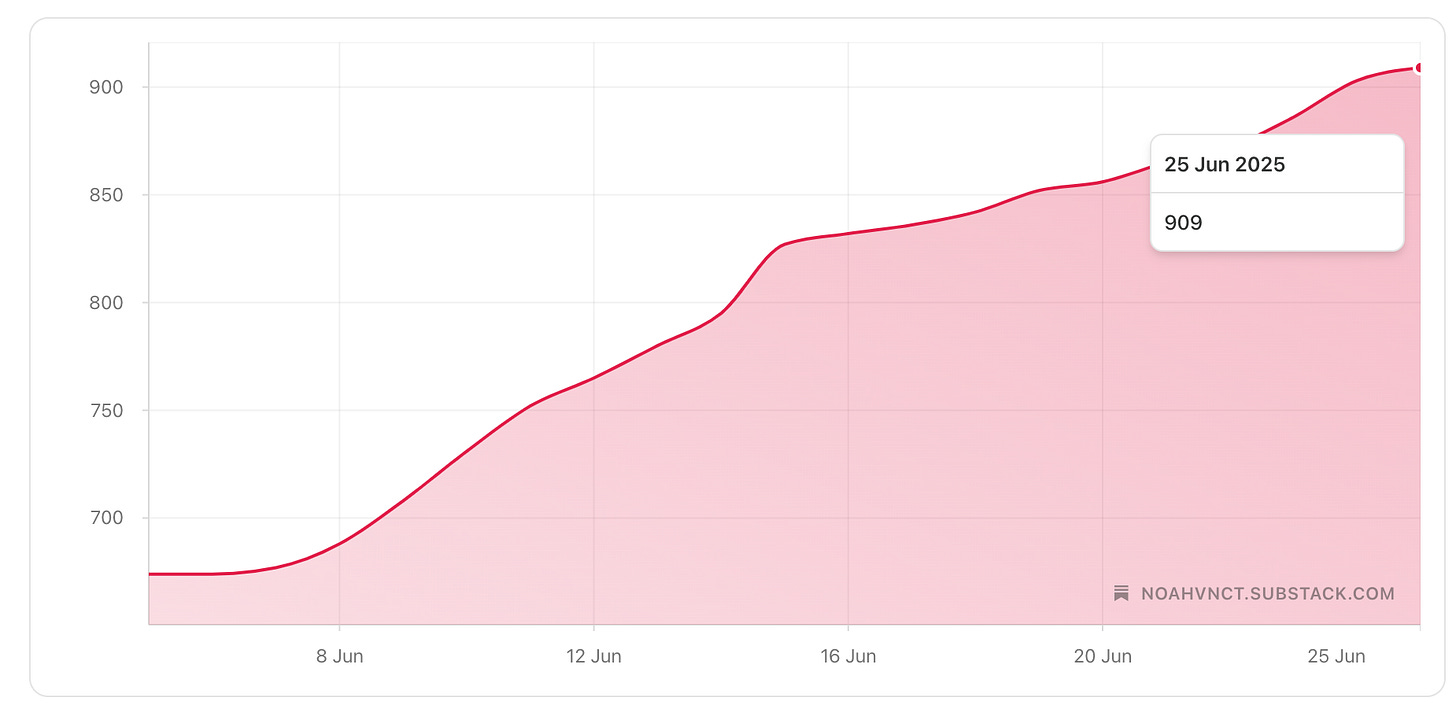
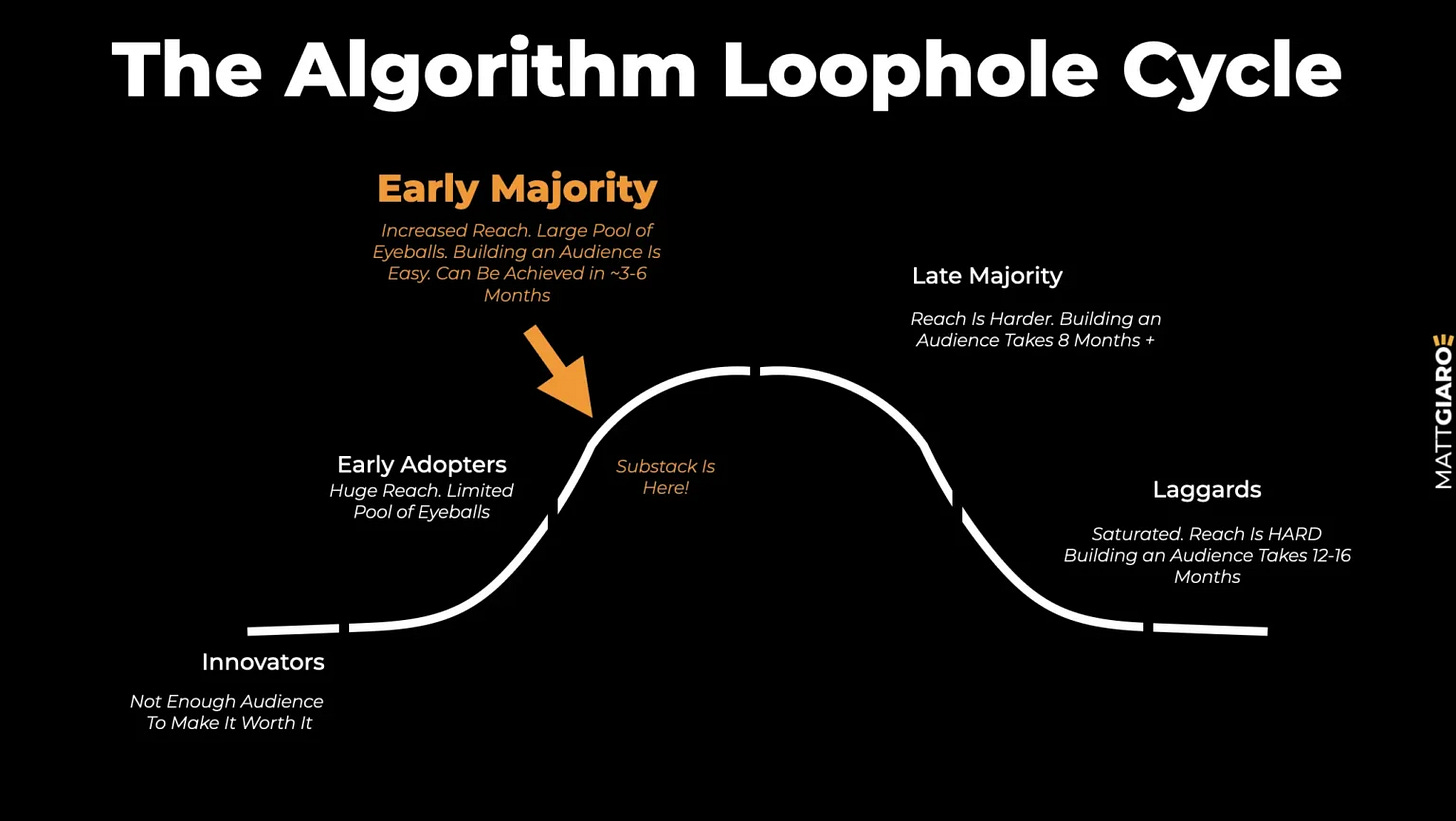

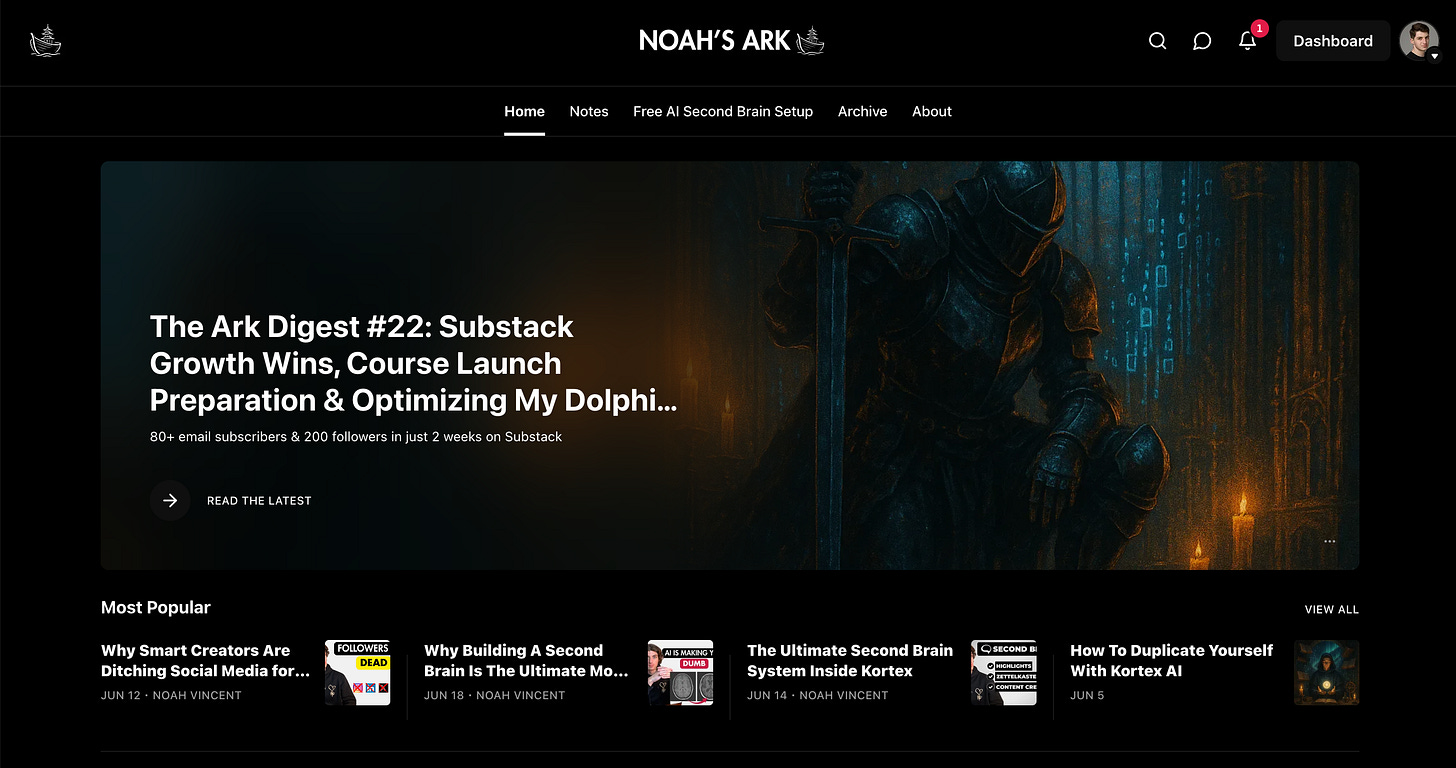
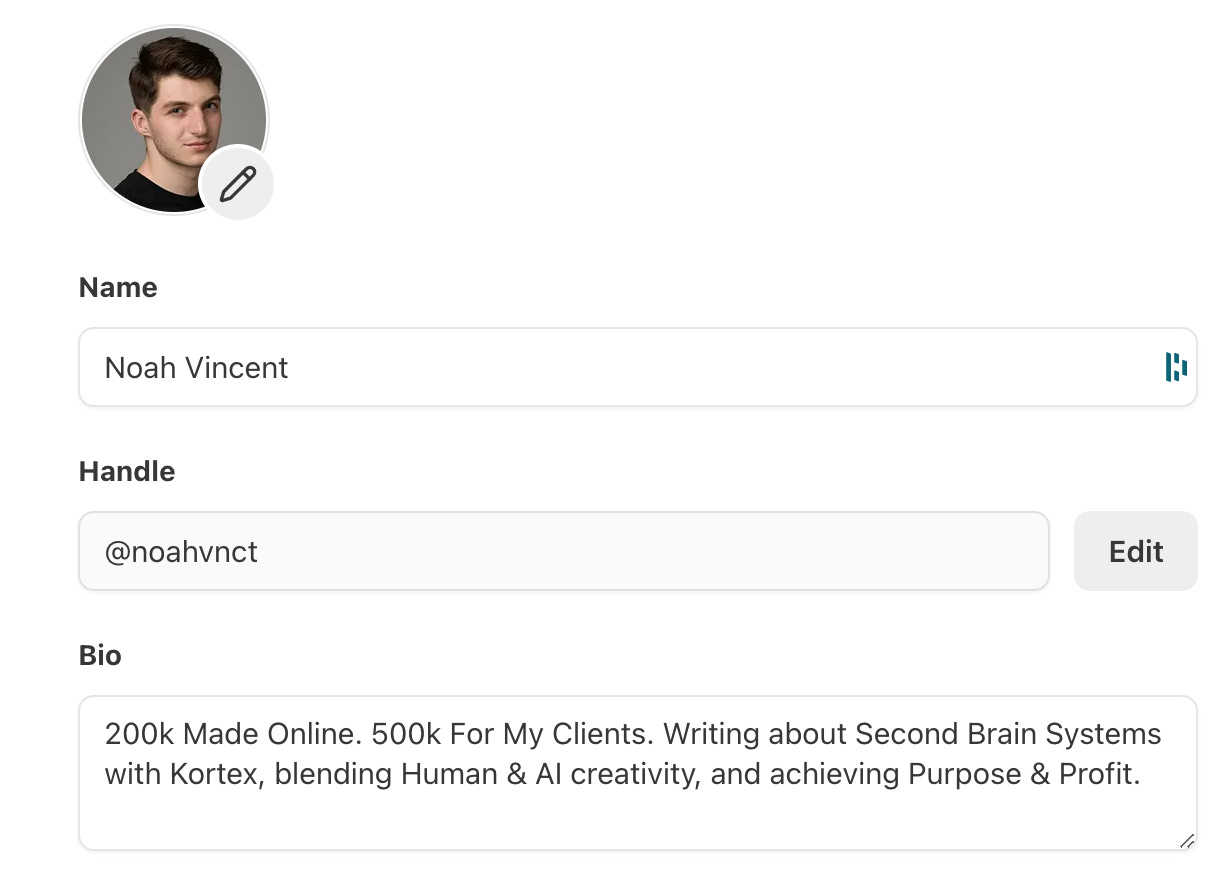

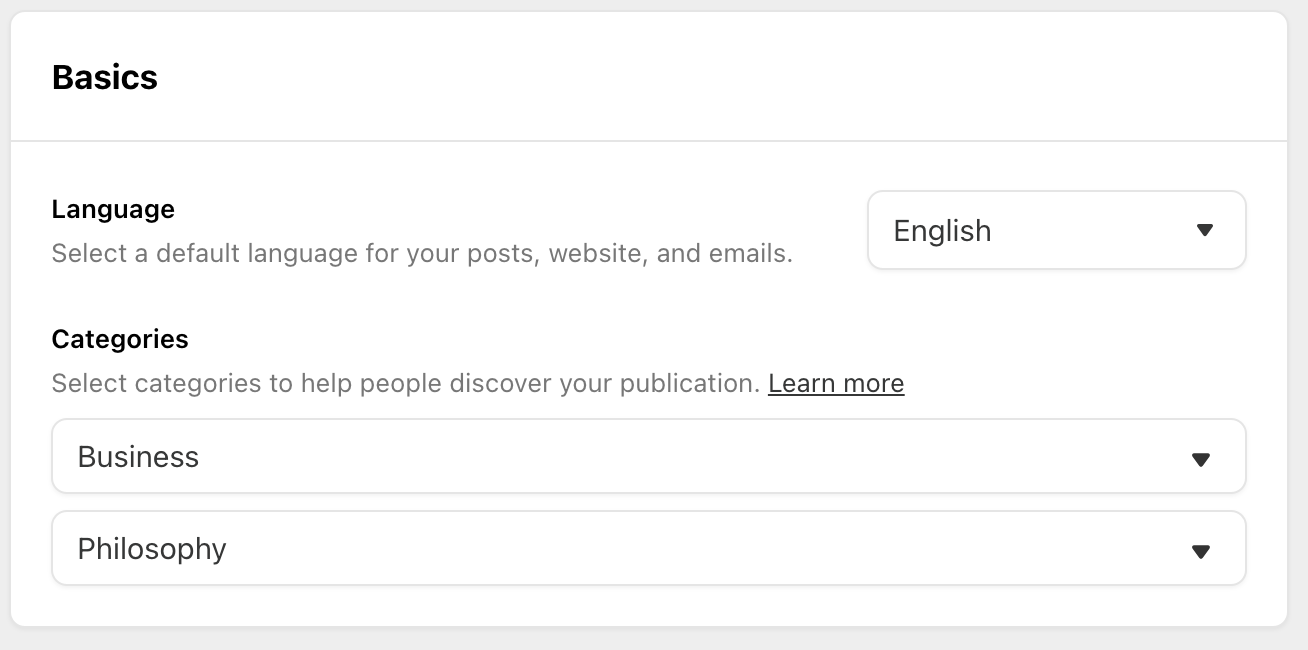
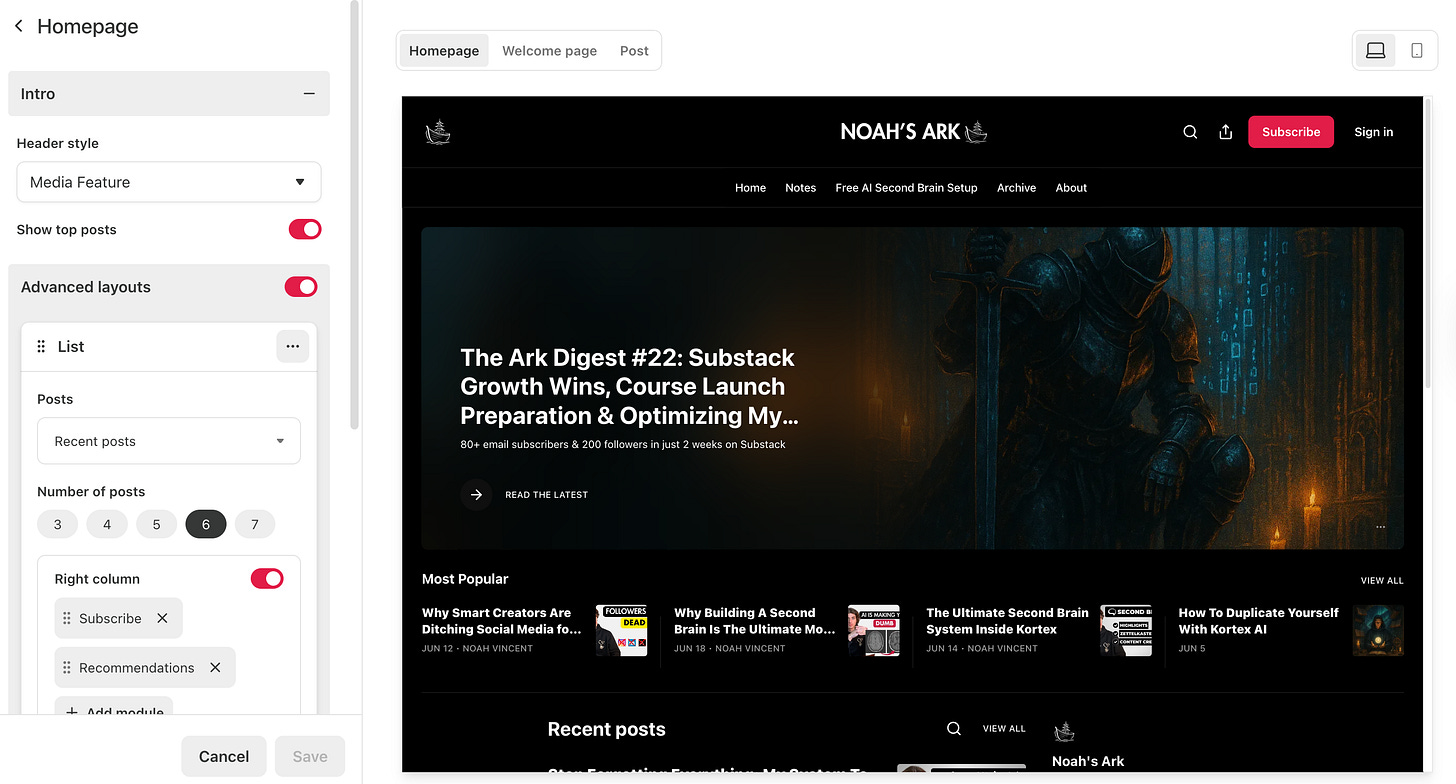
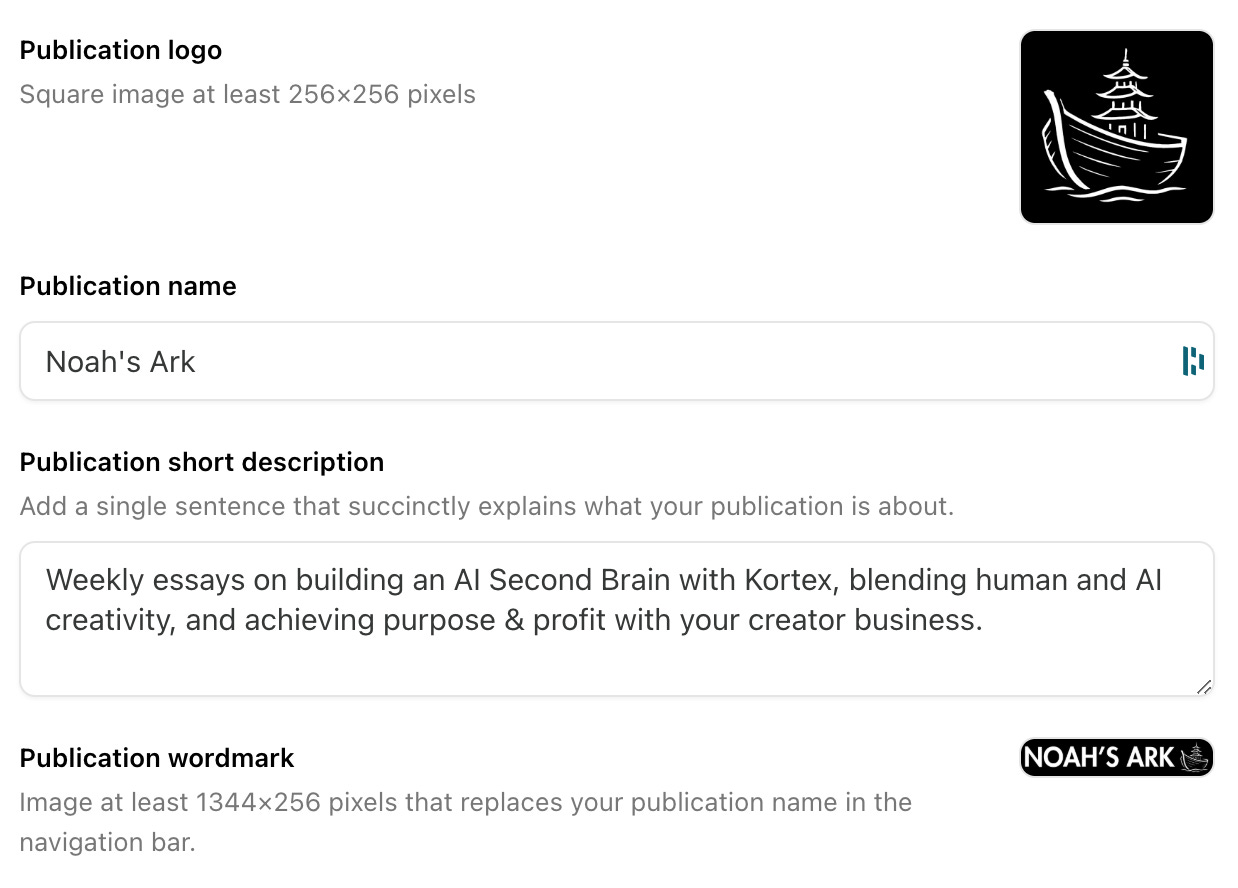

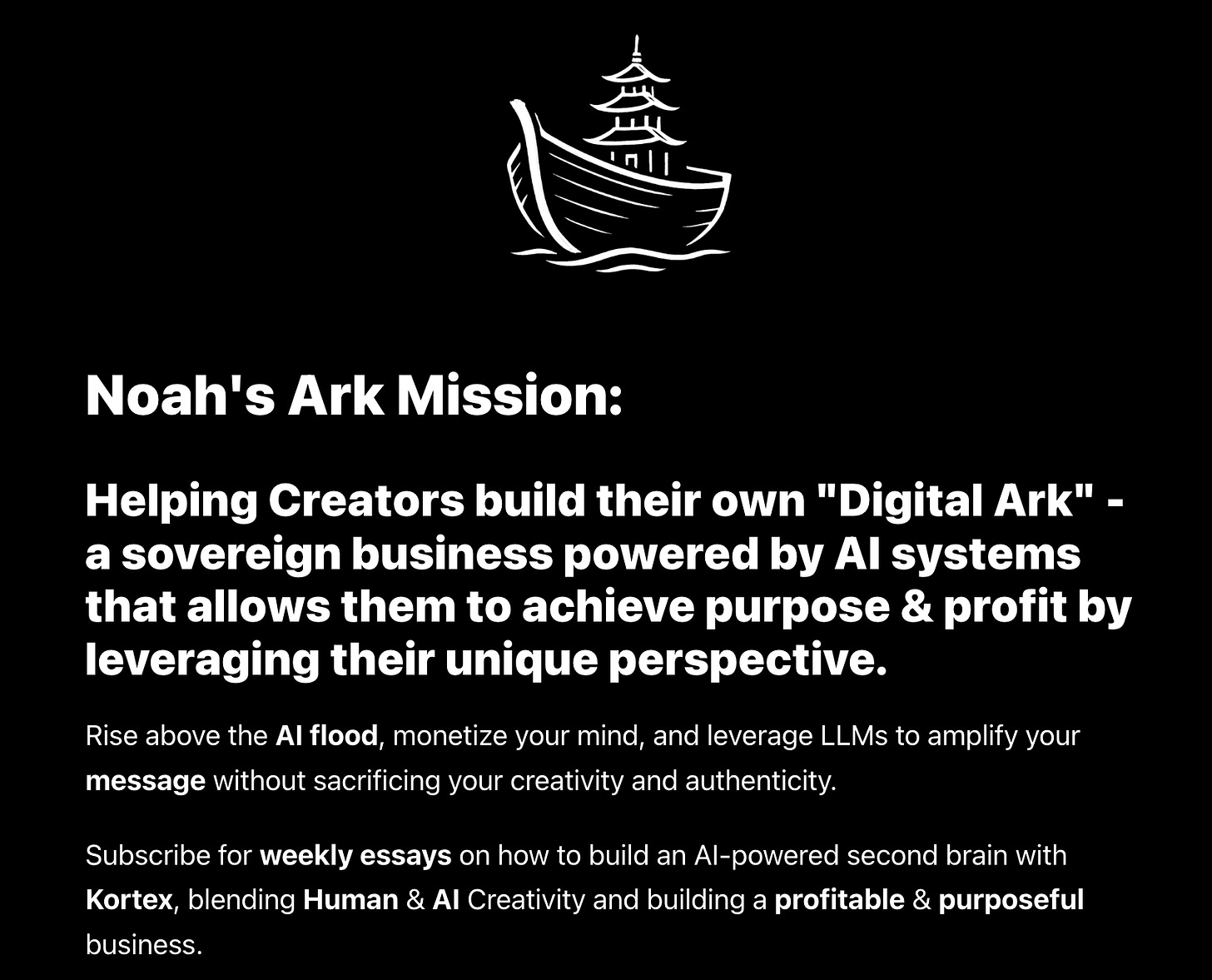
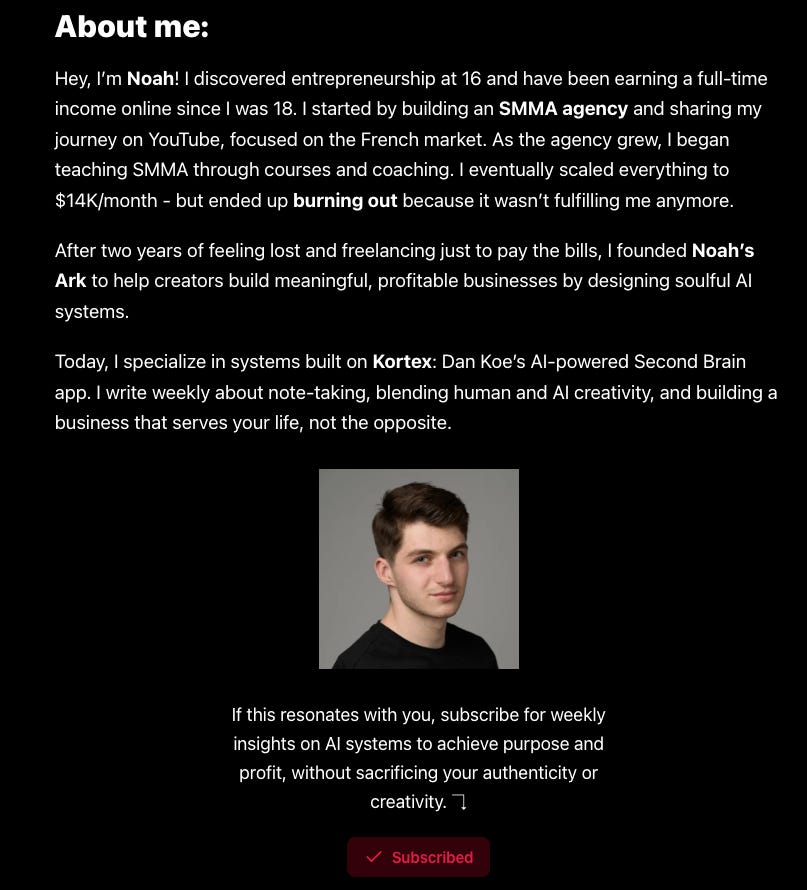
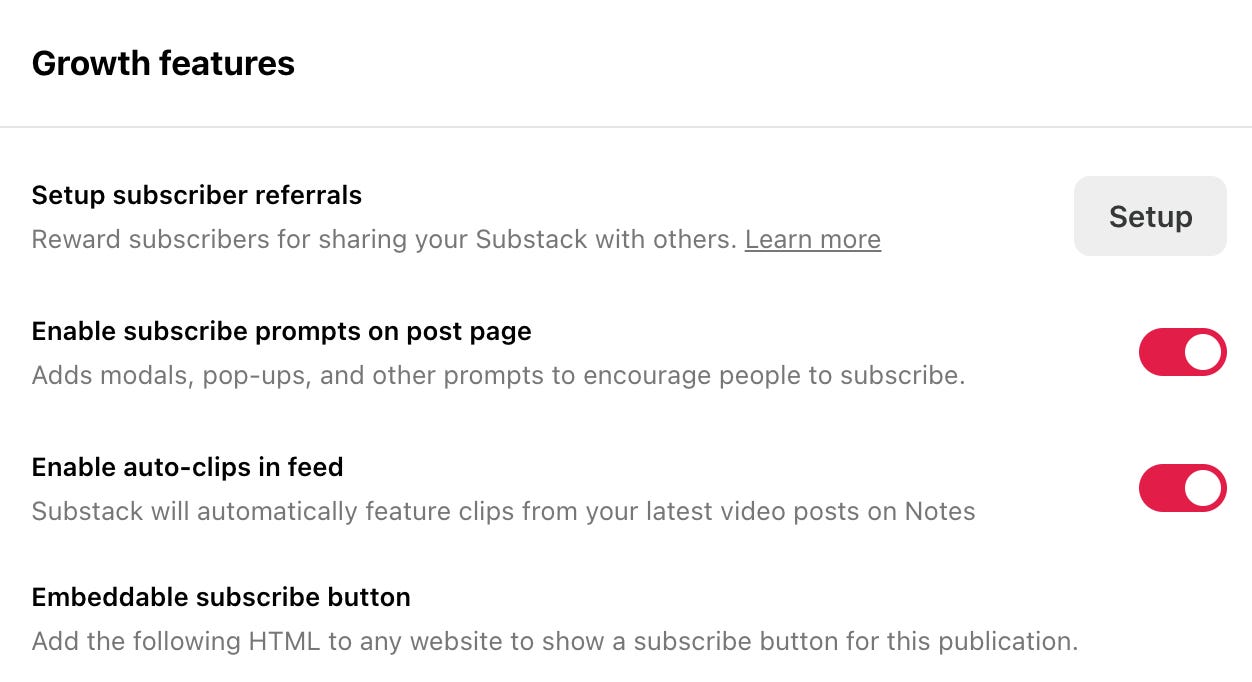
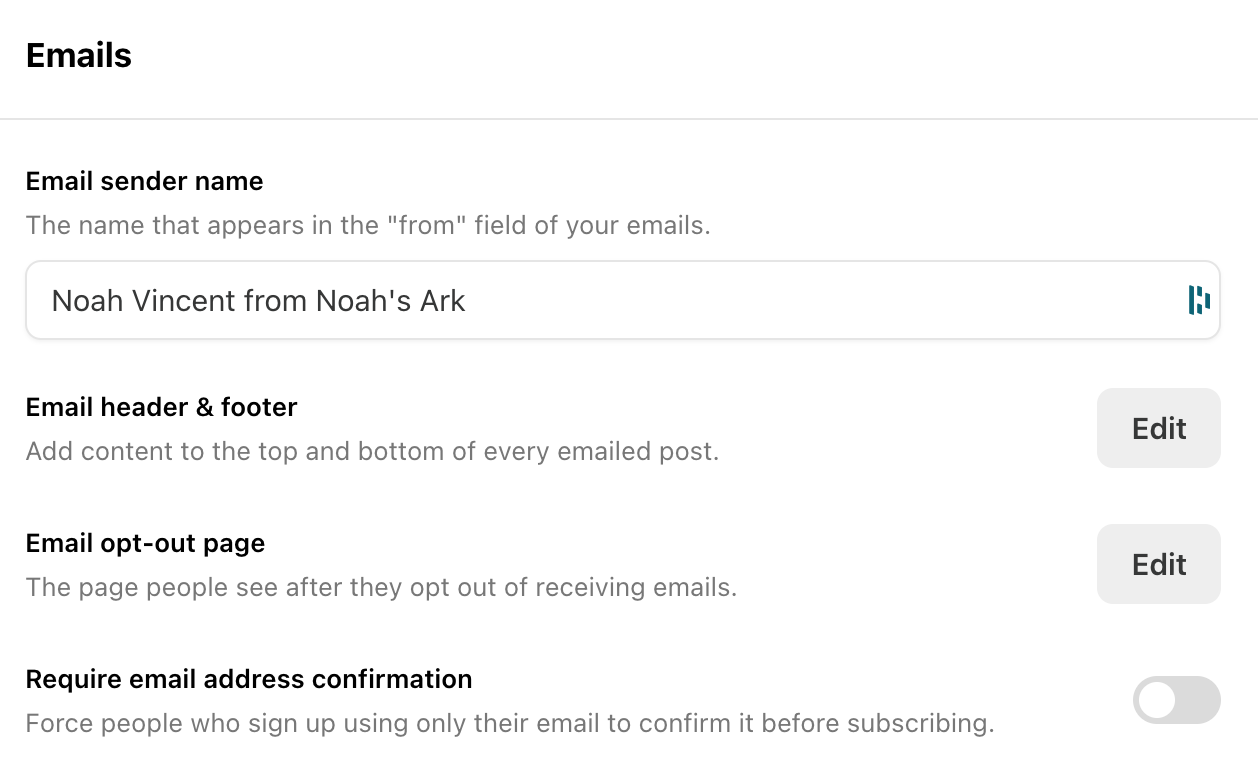
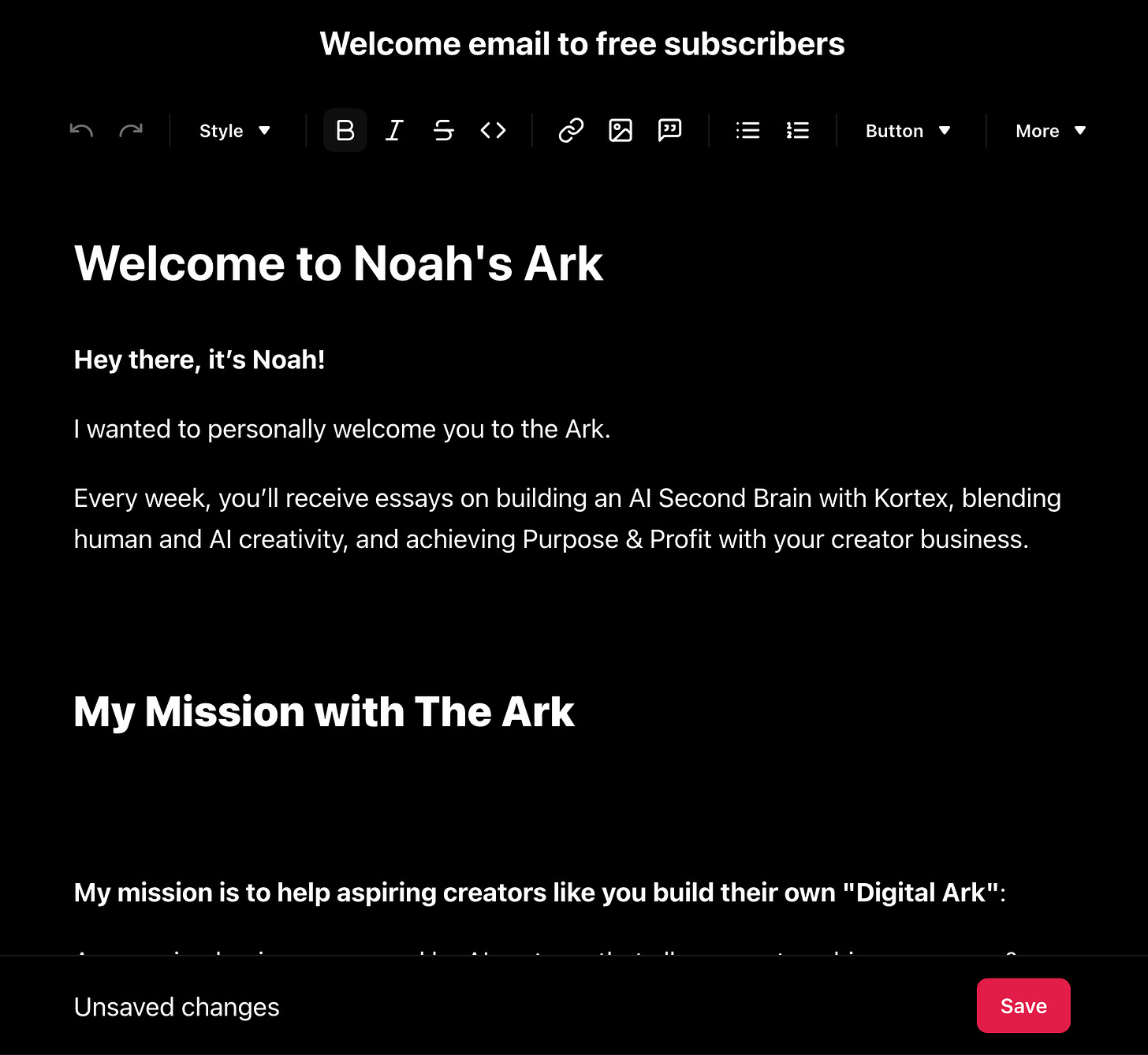
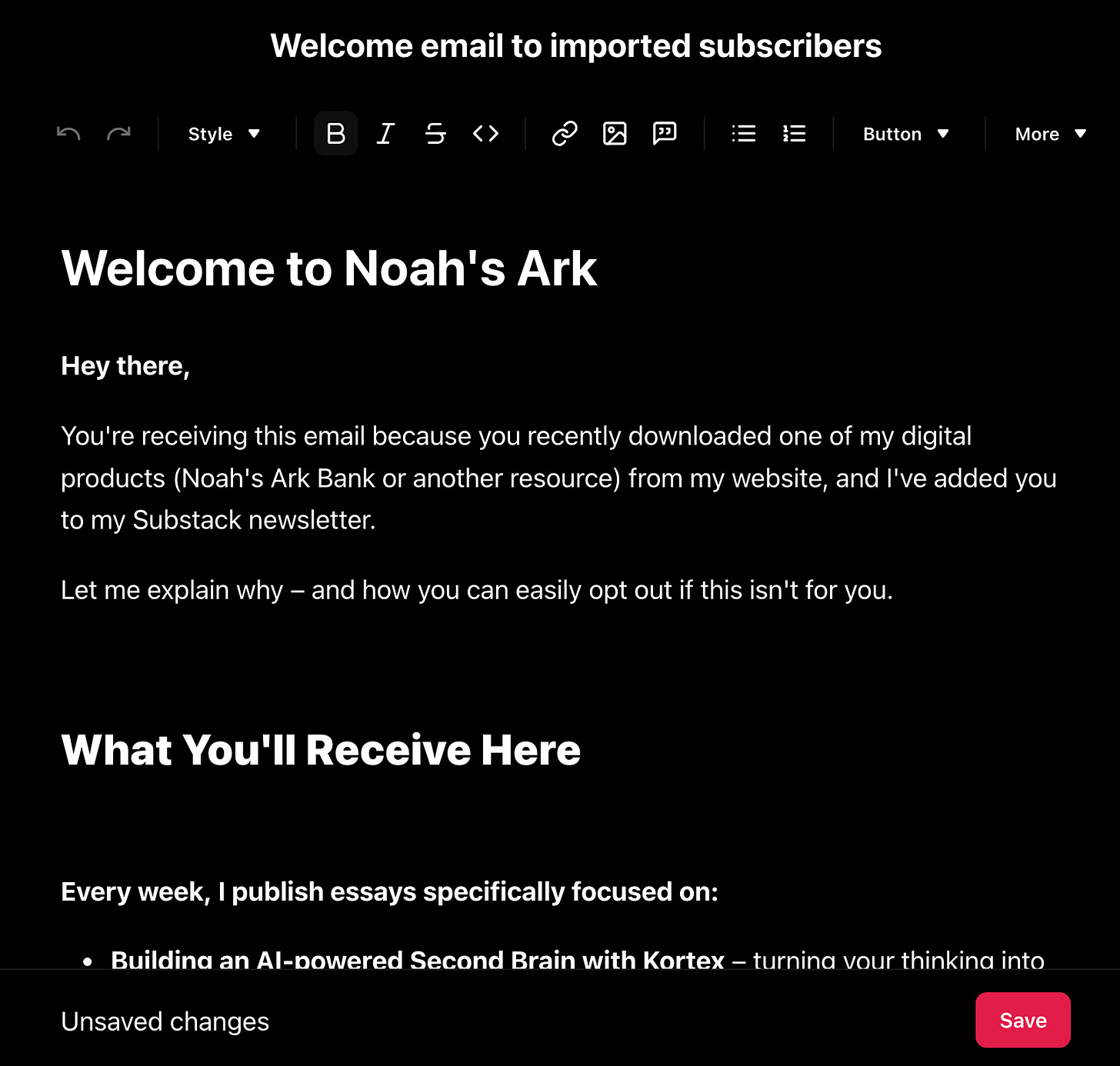
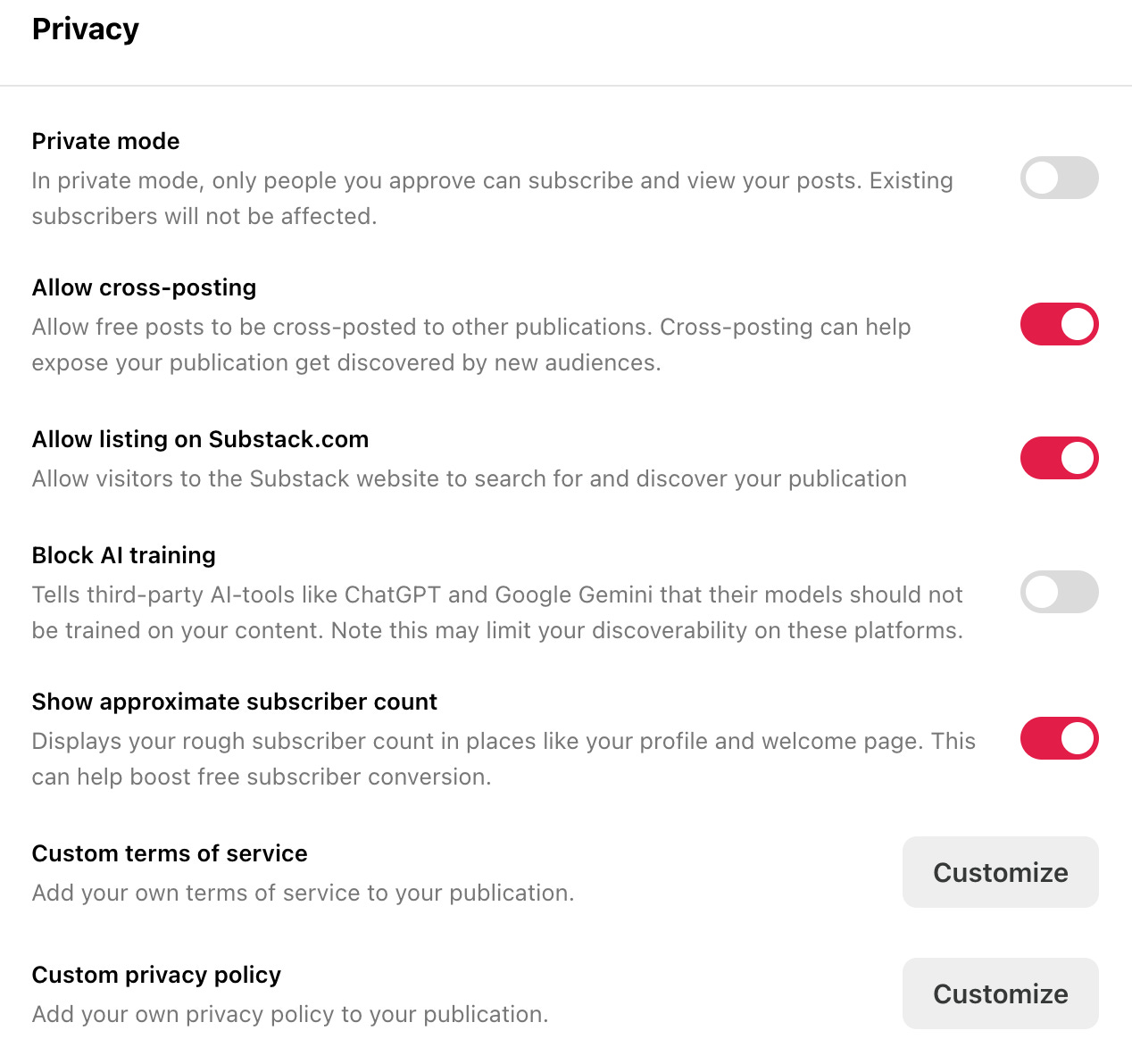

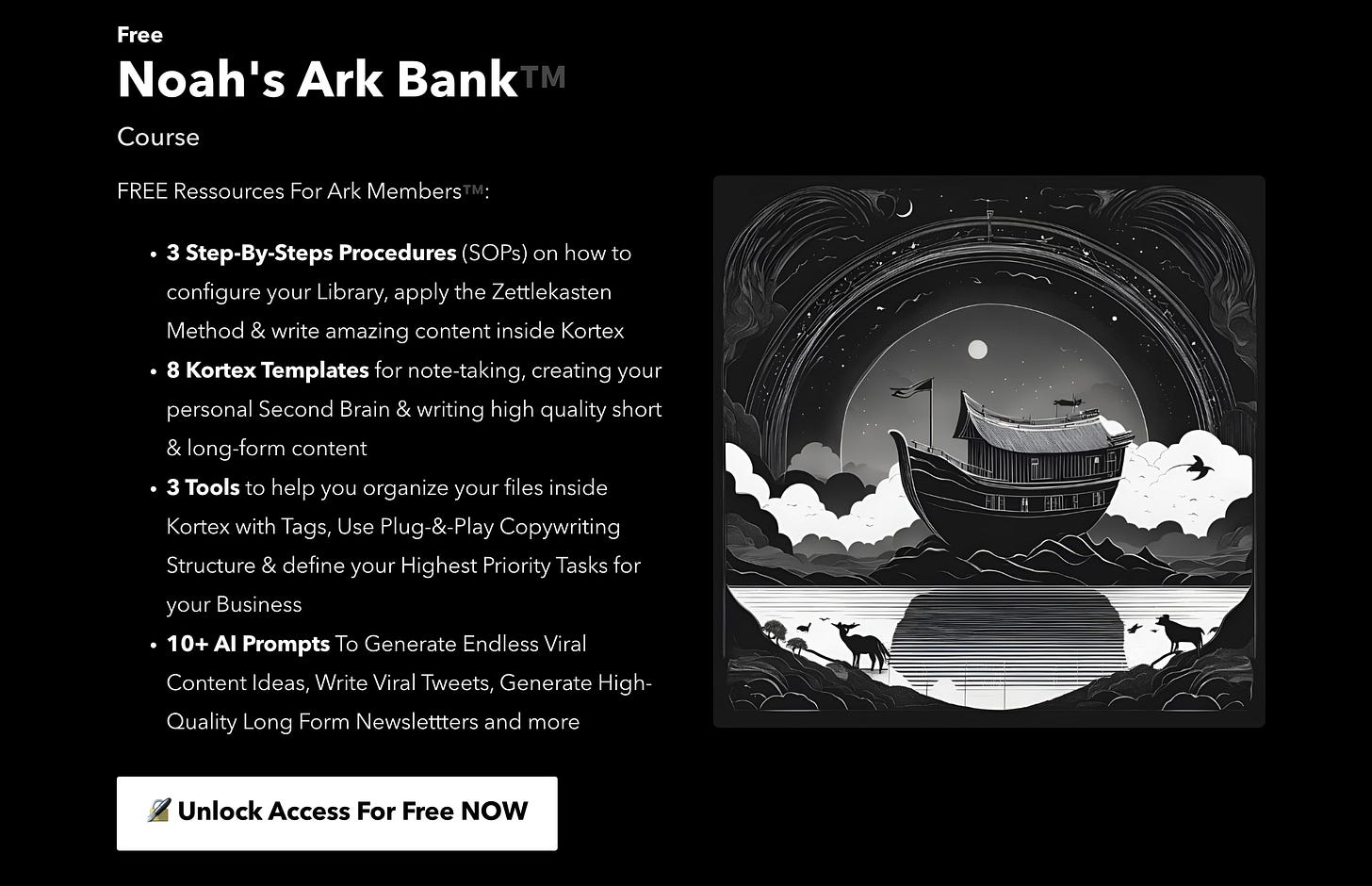


Have to hand it to you Noah - this is beyond helpful for those of us with limited bandwidth(and maybe some “dad brain”).
Saving to revisit later!
Brilliant !
And it’s thanks to you for giving me the push to be on Substack 🙏🏼